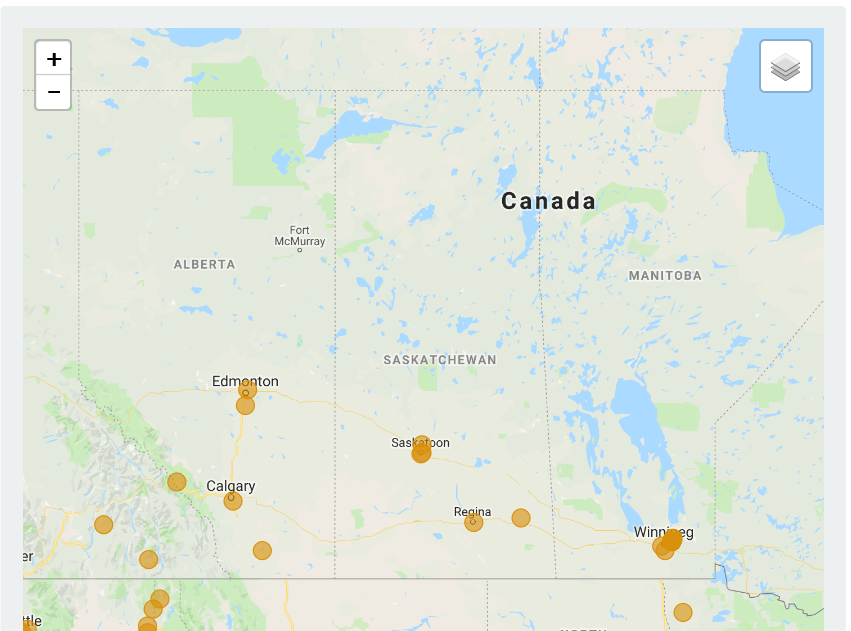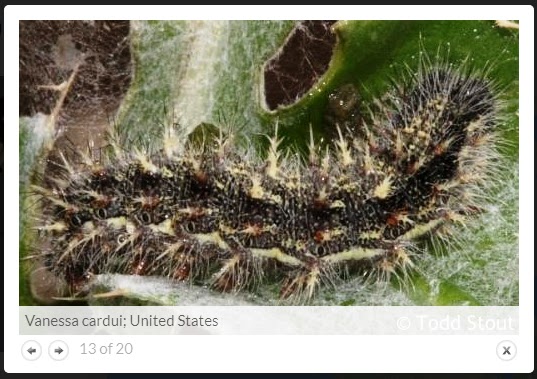The case of the Monarch butterfly vs. Painted Lady butterfly (also Viceroy butterfly) An orange butterfly fluttered by. Was it a Monarch butterfly (Danaus plexippus)? Or a Painted Lady butterfly (Vanessa cardui)? If it’s a Monarch, it is species of Special Concern listed under the Species at Risk Act and is not a crop pest. Instead, it’s larvae feed solely on milkweed (Asclepias spp.), typically found in wetland areas. Painted Lady larvae, on the other hand, feed on a wider range of plants including sunflower, canola, mustard, borage, soybean, Canada thistle, burdock, knapweed, wormwood and many other plant species. While neither species overwinter in Canada, Monarchs have regular migratory routes into Canada from Mexico through the USA; Painted Ladies are accidental tourists that are on occasion blown up from the US. One important distinguishing characteristic is the distinct black band with white dots that outline the wings of Monarchs. Painted Ladies do not have this band; instead they have thin white markings along the scalloped wing edges.
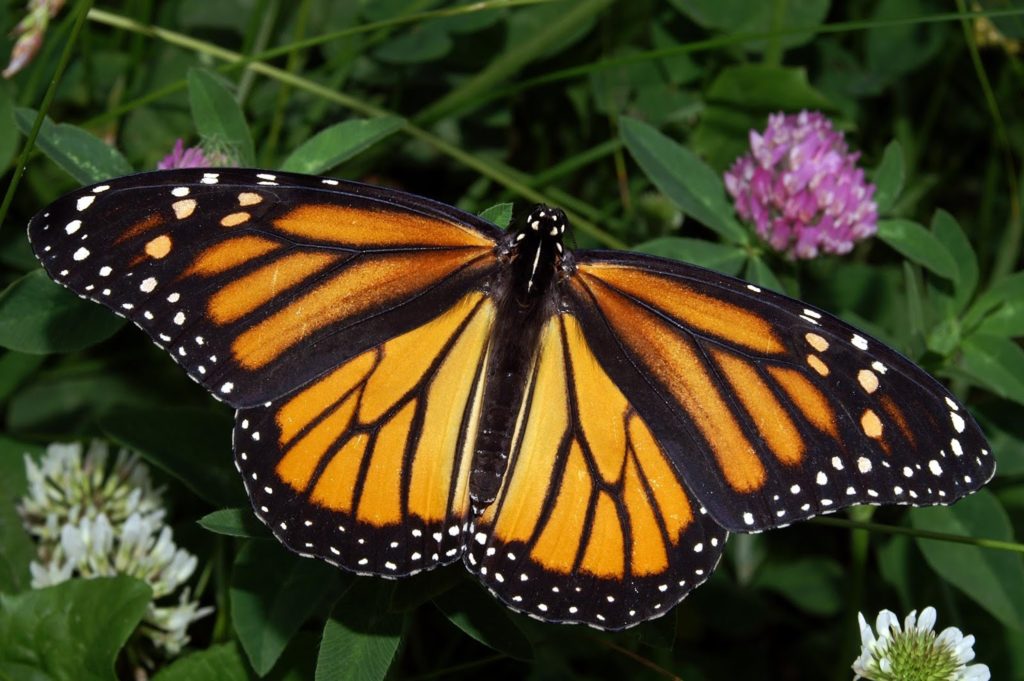
cc by sa 3.0 Kenneth Dwain Harrelson
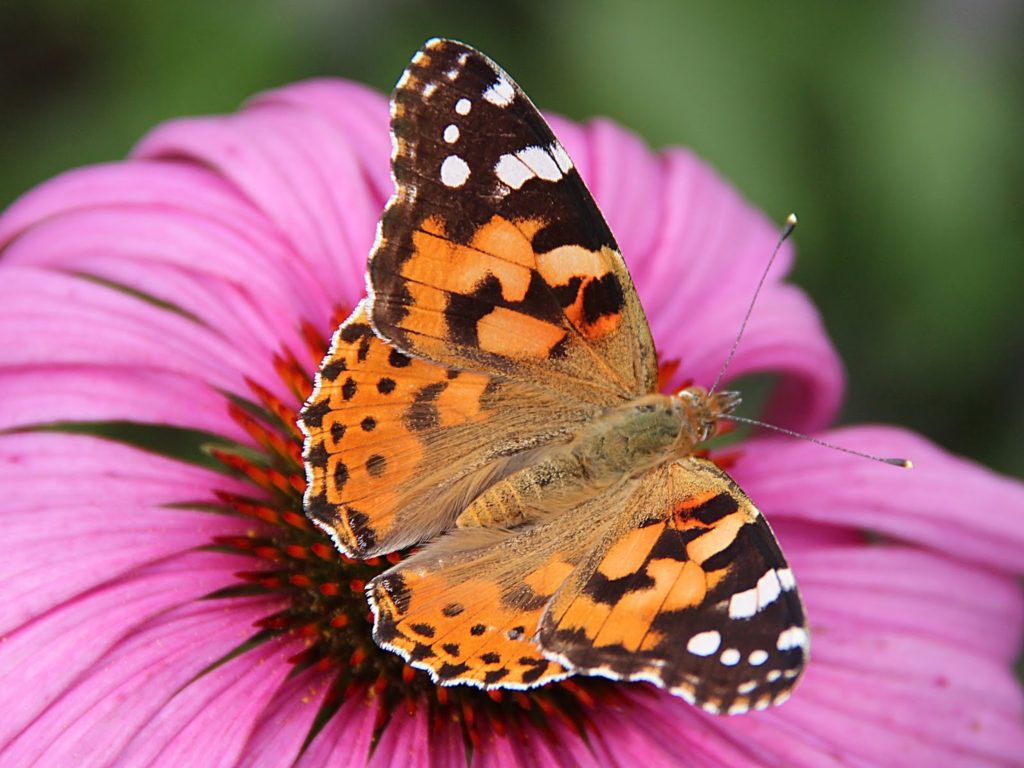
cc by 3.0 Jean-Pol Grandmont
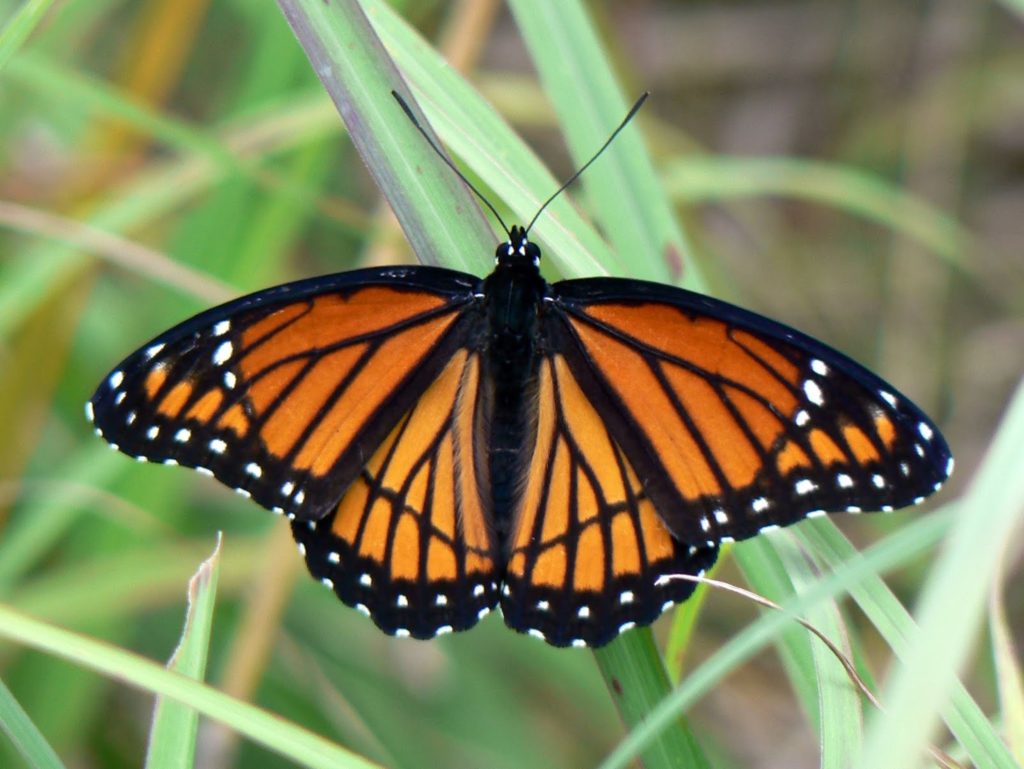
cc by 2.0 Benny Mazur
Viceroy butterflies (Limenitis archippus) are even more difficult to tell from Monarchs. Viceroys are smaller than Monarchs and sport a black line running through the middle (side-to-side) of the hindwing. Like the Monarch, Viceroys are not crop pests as their larvae feed exclusively on trees of the willow family (willow, poplar, cottonwood). For more information about Painted Lady butterflies, see the Insect of the Week page and our posts on the annual Monarch butterfly migration. The case of the innocuous versus the evil twin: When making pest management decisions, be sure that the suspect is actually a pest. This can be challenge since insects often mimic each other or look very similar. An insect that looks, moves and acts like a pest may in fact be a look-alike or doppelganger.
Doppelgangers may be related (e.g. same genus) or may not be related, as in the case of monarch butterflies (Danaus plexippus) and viceroys (Limenitis achrippus). Doppelgangers are usually relatively harmless but sometimes the doppelganger is a pest yet their behaviour, lifecycle or hosts
may be different.
Correctly identifying a pest enables selection of the most accurate scouting or monitoring protocol. Identification and monitoring enables the application of economic thresholds. It also enables a producer to select and apply the most effective control option(s) including method and timing of application. For the rest of the growing season, the Insect of the Week will feature insect crop pests and their doppelgangers.
Review previously featured insects by visiting the Insect of the Week page.

